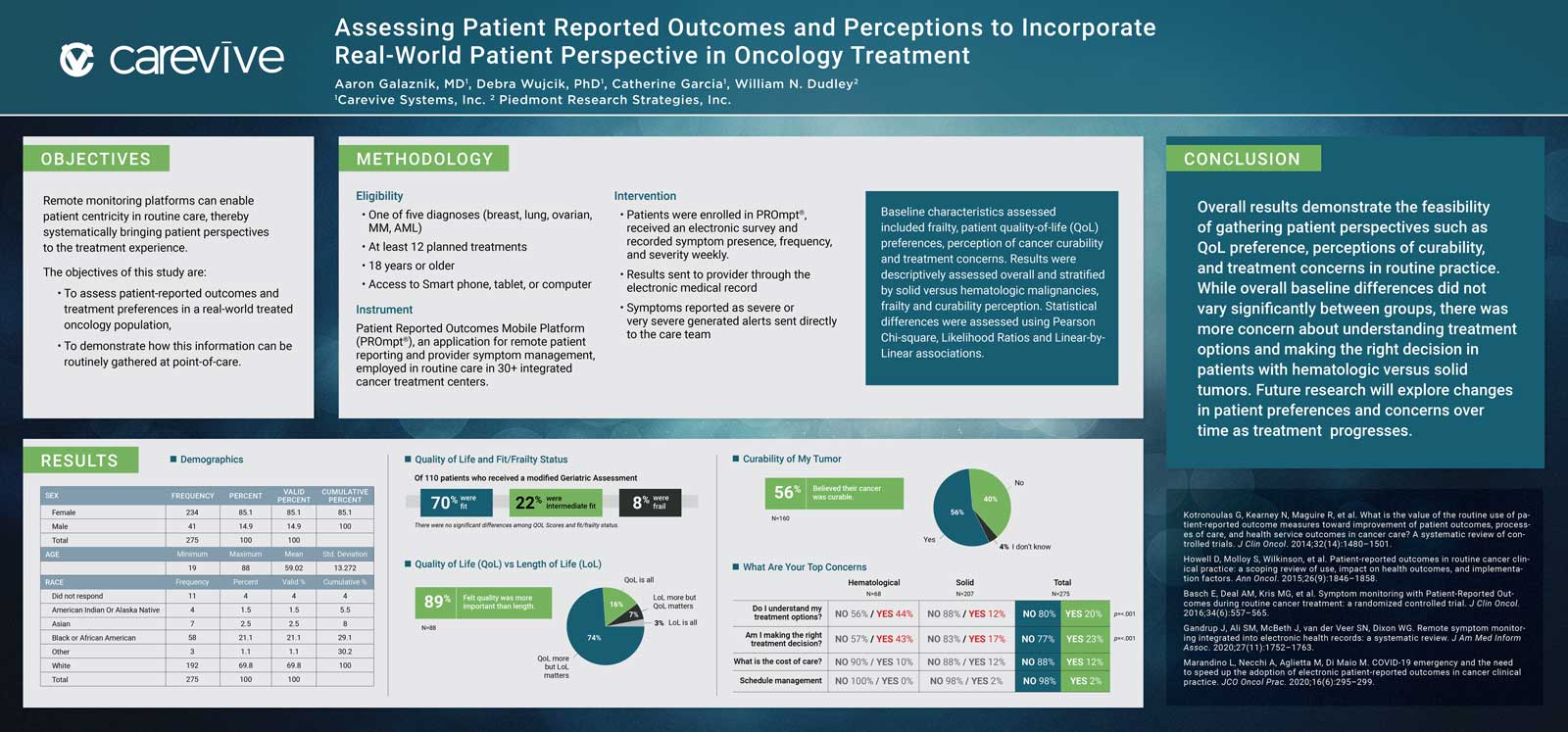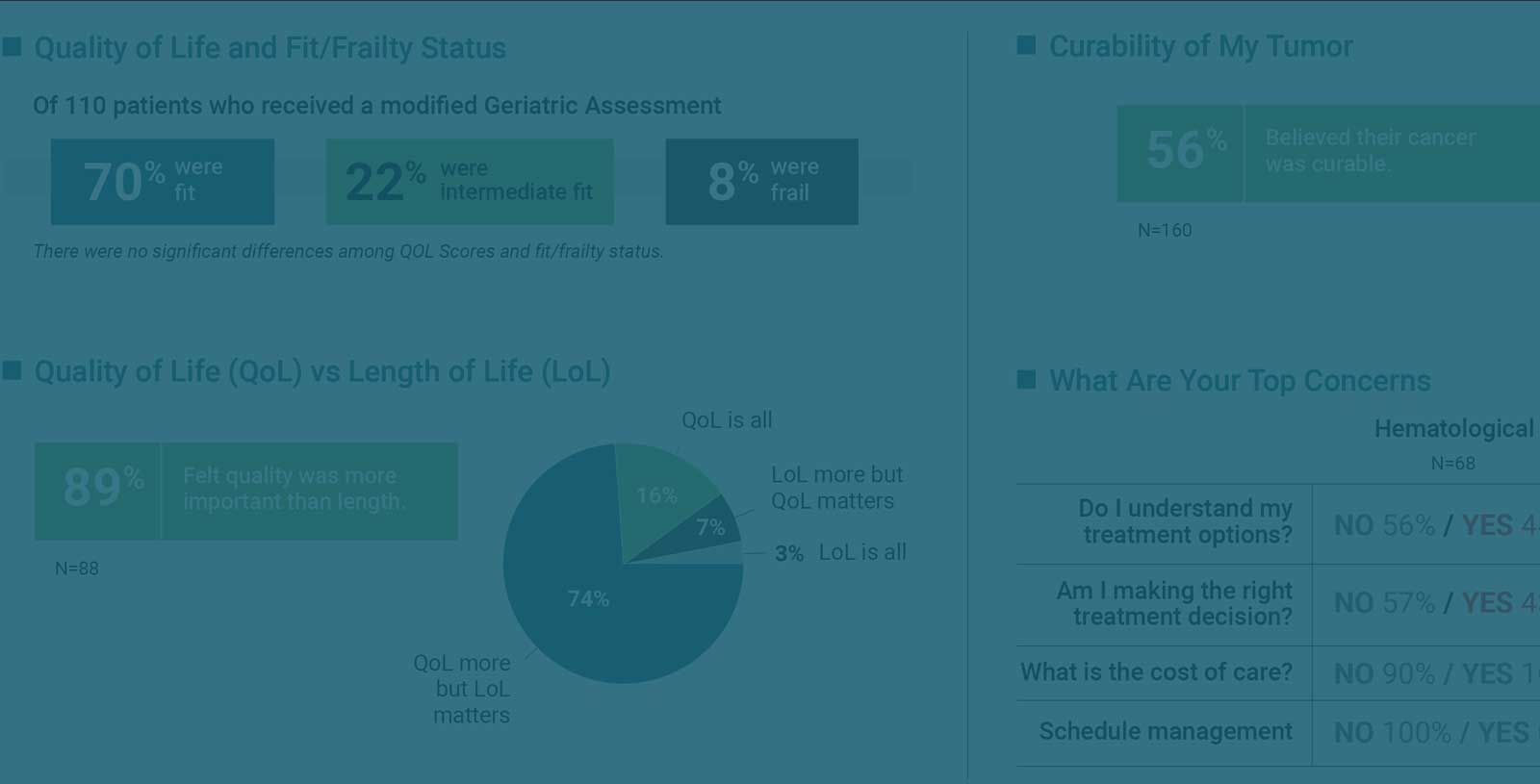
Authors: Aaron Galaznik, MD1, Debra Wujcik, PhD1, Catherine Garcia1,, William N. Dudley2
- Carevive Systems Inc.
- Piedmont Research Strategies, Inc.
Objectives
Remote monitoring platforms can enable patient centricity in routine care, thereby systematically bringing patient perspectives to the treatment experience.
The objectives of this study are:
- To assess patient-reported outcomes and treatment preferences in a real-world treated oncology population,
- To demonstrate how this information can be routinely gathered at point-of-care.
Methodology
Eligibility
- One of five diagnoses (breast, lung, ovarian, MM, AML)
- At least 12 planned treatments
- 18 years or older
- Access to Smart phone, tablet, or computer
Instrument
Patient Reported Outcomes Mobile Platform (PROmpt®), an application for remote patient reporting and provider symptom management, employed in routine care in 30+ integrated cancer treatment centers.
Instrument
- The mGA includes four domains: age, activities of daily living (ADLs), instrumental ADLs, and comorbidities. Results were reported as a) fit, b) intermediate fit, and c) frail
- Survey results along with history of falls was used to create the Frailty Index (Fl)
Intervention
- Patients were enrolled in PROmpt®, received an electronic survey and recorded symptom presence, frequency, and severity weekly.
- Results sent to provider through the electronic medical record
- Symptoms reported as severe or very severe generated alerts sent directly to the care team
Baseline characteristics assessed included frailty, patient quality-of-life (QoL) preferences, perception of cancer curability and treatment concerns. Results were descriptively assessed overall and stratified by solid versus hematologic malignancies, frailty and curability perception. Statistical differences were assessed using Pearson Chi-square, Likelihood Ratios and Linear-by- Linear associations.
Conclusion
Overall results demonstrate the feasibility of gathering patient perspectives such as QoL preference, perceptions of curability, and treatment concerns in routine practice. While overall baseline differences did not vary significantly between groups, there was more concern about understanding treatment options and making the right decision in patients with hematologic versus solid tumors. Future research will explore changes in patient preferences and concerns over time as treatment progresses.



